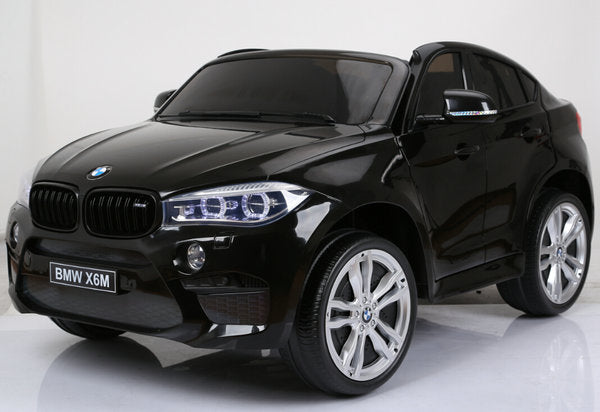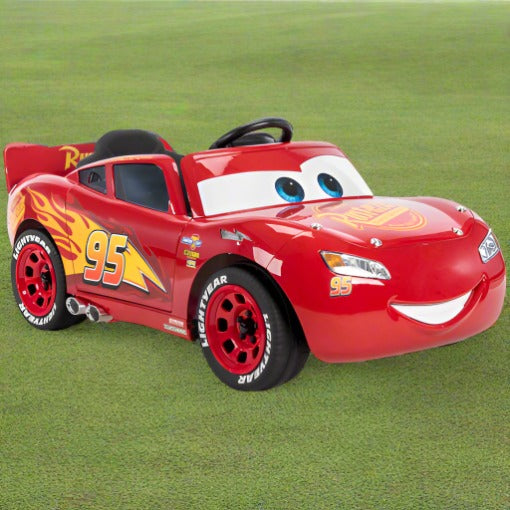Good Reasons For Choosing Electric Kids Cars
Good Reasons For Choosing Electric Kids Cars
Blog Article
What Should I Be Aware Of About The Battery's Life And Charging Time Of An Electric Ride-On The Kids' Car?
Knowing the battery type and charging time of a kid's electric ride-on vehicle is crucial for ensuring maximum performance and uninterrupted time for play. Here's what you need to know about the battery type -
The majority of electric vehicles for children are rechargeable, and typically use lead-acid battery or lithium-ion battery. In general, rechargeable lithium-ion batteries provide more battery life and longer lifespan and also faster charging times than lead acid ones.
Battery Capacity
The operating duration of the ride-on vehicle is determined by the battery's capacity. This is measured in amp hours or watt-hours. Batteries with high capacity allow for longer playtime, without needing recharge.
Run Time -
The running time of the electric ride-on car is referred to how long it can run continuously on one charge. It is contingent on a variety of factors such as the battery's capacity along with motor speed, conditions and weight of the rider.
For electric cars, the typical runtime is between 30 minutes and 2 hours from one battery charge. However, lithium batteries with high capacity are able to provide longer run times.
Time to Charge
The charging time is how it takes for the battery to fully recharge after it's been depleted. The charging time depends on the charger's specifications, battery capacity and charging method.
Charge times vary between 8 and 12 hours to complete charge for electric rides-on cars. Certain models can charge faster speed, particularly using lithium ion batteries.
The battery's longevity and safety can be ensured by following the manufacturer's charging recommendations. Overcharging or undercharging the batteries can result in a negative impact on their performance and lifespan.
Charge Methods Charge Methods
Electric ride-on cars typically come with chargers that plug into a standard home outlet. Some models include fast-charging capability or a smart charging system which monitors the state of charge and adjusts the rate of charging accordingly.
To prevent battery damage or harm to electrical systems, ensure the charger that comes with the car is compatible with the charging port.
Additional Batteries -
Some electric rides offer the option to purchase extra batteries, or spare batteries, for extended playtime. You can replace the old batteries with new ones which are fully charged so you'll have less time between sessions.
When you understand the battery's duration and charging time of an electric ride-on children's car it is possible to ensure that your children will have fun and uninterrupted playtime while exploring their environment. The battery's life can be extended by regularly charging the battery and employing proper charging methods. Check out the top rated electric kids cars for site info including cars pedal car, riding digger, electric ride on cars, car on ride, toy with car, childrens digger, 2 seater electric cars, car for toy, car toy car toy, toy the car and more. . 
What Is The Distinction Between Electric Ride-On Vehicles And Their Equivalents?
Most electric ride-ons come with multiple speed and control settings to accommodate children of various abilities, and provide a safe and fun riding experience. Here's how and why these features are put into place - Safety
Children have different levels of proficiency and confidence when it comes time to drive on-road vehicles. With the various speed settings available parents can adjust the vehicle's maximum speed in accordance with the child's capabilities and reduce the risk of having an accident.
Younger children and those who are beginning their journey are better off using the lower speed setting as older children or those who have more experience are more comfortable using the higher speeds.
Gradual Learning Curve -
With various speeds electric ride-on cars provide children with the opportunity to learn, which allows them to gradually develop their driving skills. The beginning drivers will be more confident when they master how to control their vehicles at lower speeds.
Parents can boost the speed of their children as they grow more skilled in driving. This provides a sense achievement and progress.
Parental Control
Some electric vehicles come with parental control options, which enable parents to restrict the speed limits of the vehicle from a distance. This feature gives parents peace of mind knowing they are able to intervene and alter the speed as necessary to ensure their children's safety.
Depending on the model, parental control options may include remote speed limits and emergency stop buttons or remote steering capabilities.
The ability to adapt is a key component of this.
The needs and interests of children can change as they grow. Electric ride-on vehicles that have multiple speed settings offer flexibility and flexibility to accommodate the changes in their needs over time.
Children can speed up as they grow in experience and gain confidence. This makes for an exciting and challenging ride. In the opposite direction parents can decrease the speed of the ride for younger children or for their peers.
Customization
Multi-speed settings allow customization of the experience of riding based on personal preferences. Children can choose the speed that is appropriate for their comfort and level of excitement.
Certain electric ride-on vehicles have extra controls, like adjustable brake sensitivity or acceleration. They allow the driving experience be tailored to meet specific needs.
Overall, electric ride-on cars that have multiple control and speed options offer a safe, adaptable and flexible experience for children. This is true regardless of age, level of ability or preference. These features foster confidence, boost the development of skills and offer fun adventures for children while allowing parents the opportunity to supervise and intervene with their child as necessary. See the top discover more about Lamborghini ride on car for website info including kiddies cars, electric car ride, ride of car, ride of car, two seater electric cars, toy in car, ride of car, electric ride along car, car toy car toy, toy toy cars and more. . 
What Are The Possibilities For Remote-Controlled Cars For Children? What Are Their Advantages And Disadvantages?
Remote-controlled children's vehicles, or RC cars, are available in a wide range of styles, sizes and prices that can accommodate different budgets and needs. Here's a list of the different types of remote control kids' cars, including the dimensions, cost ranges, and pros and con.
Electric RC Cars - Battery-powered remote-controlled cars that can be used for outdoor and indoor use. They are available in various styles such as buggies, trucks or sports cars.
Nitro RC Cars : Gas-powered vehicles that operate remotely and have higher performance, but also need more care. They are typically larger and cost more than electric RC cars.
Scale Models: Remote-controlled replicas including real vehicles such as cars, planes, trucks, and boats. Scale models come in various sizes, from 1 10- to 1-24 inches and larger scales providing greater detail and realism.
Sizes -
The sizes of remote-control cars for kids range from small miniature versions to larger-scale replicas. The size of the vehicle could affect its performance, speed and braking characteristics.
Micro-sized car are lightweight and compact. They're ideal for young children and indoor use. Larger-scale models have more power and endurance which makes them suitable for off-road racing in the outdoors and for outdoor driving.
Prices
The prices of remote control children's cars vary depending on factors such as dimensions, features, brands, and build quality.
The Nitro and Electric RC cars in larger scale can cost between $100 and $500.
Models and top-of-the-line hobby RC cars range from a few hundred dollars to over 1000 dollars, depending on the amount of detail.
What are the pros and cons?
Pros -
Entertainment - Children's remote controlled vehicles can offer hours of entertainment and excitement for both adults and children.
Skill Development - Operating an RC car can help children develop eye coordination, spatial awareness, and problem-solving abilities.
Social Interaction: RC vehicles are ideal for social interactions with family and friends.
Aftermarket parts such as upgrades, accessories, and other items from the aftermarket can be used to modify numerous RC cars and increase their performance.
Cons
Cost - High-end models with advanced features, like hobby-grade cars, can be quite expensive.
Learning Curve – Operating a RC vehicle requires time and practice. Younger children may initially be unable to manage the controls.
Maintenance is necessary for owners of RC cars. They should regularly clean, lubricate, and make repairs or replace components.
Safety concerns - RC car safety can be affected due to electrical hazards, collisions and other hazards if the cars are not controlled and used with caution by an adult.
Overall, remote control children's cars provide an exciting and educational experience for kids of all ages. However, it's essential to consider things like the size, price features, and safety when selecting the appropriate model for your child. For older kids, hobby grade RC cars could be a better option. But, smaller models could be suitable for kids who are young. Read the recommended kids ride on cars kidscars.co.uk recommendations for more tips including electric toy car, kidscars, childs ride on car, pedal car, toy toy cars, toy toy cars, childs electric ride on car, cars pedal car, car for toy, childs electric ride on car and more. .